Automatically create
Multiple Choice Polls
from your
MS Teams
chat
for
Computer Science Lecture
Used by 4,000+ universities, businesses, and streamers
What does StreamAlive's
Multiple Choice Polls
do?
Step into the realm of interactive teaching with StreamAlive's Multiple Choice Polls seamlessly integrated into your MS Teams sessions. This tool effortlessly transforms real-time chat comments from your students into visually engaging Multiple Choice Polls, enhancing live audience engagement without the need for additional screens or external websites. Imagine the simplicity of gauging your students' understanding as they respond directly in the chat. For instance, while discussing the concept of algorithms, quickly ask, "Which of the following sorting algorithms is the most efficient: Bubble Sort, Merge Sort, Quick Sort?" Or during a lecture on data structures, pose the question, "What type of data structure is a queue: Linear, Non-linear, Tree?" And to spark interest in programming languages, engage them with, "Which language is known for its use in web development: Python, JavaScript, C++?" With StreamAlive, these interactions turn routine lessons into dynamic and captivating discussions, keeping your students actively involved throughout your Computer Science lectures.
StreamAlive makes interactive learning seamless during your MS Teams Computer Science lectures by offering Multiple Choice Polls without the hassle of codes, embeds, or cumbersome URLs. You can effortlessly craft these polls straight from the live chat, integrating them smoothly into your current streaming or webinar setup. This feature ensures an engaging experience by allowing your students to participate actively in discussions and assessments. Enhance your live audience engagement during lectures by quickly gathering and addressing student opinions and understanding, all within the familiar environment of MS Teams.

* StreamAlive supports hybrid and offline audiences too via a mobile-loving, browser-based, no-app-to-install chat experience. Of course, there’s no way around a URL that they have to click on to access it.
StreamAlive can create
Multiple Choice Polls
for all event types


How you can use
Multiple Choice Polls
Once your audience gets a taste for
Multiple Choice Polls
created from
the live chat, they’ll want to see them used more often.
Gauge Student Understanding
With StreamAlive's Multiple Choice Polls, assess your students' grasp of key concepts like sorting algorithms or data structures seamlessly within your MS Teams chat. This immediate feedback ensures clarity and enhances live audience engagement.
Spark Engaging Discussions
Use Multiple Choice Polls to initiate thought-provoking questions, such as which programming language is preferred for web development. This approach keeps sessions interactive and encourages students to share their perspectives, fostering a collaborative learning environment.
Test Real-Time Knowledge
During lectures, implement instant polls to test students' real-time knowledge retention. For example, instantly poll them on the characteristics of a queue in a data structure lesson, transforming passive listening into active participation.
Multiple Choice Polls
can be created by
anyone running a
MS Teams
session
.svg)
.svg)
.svg)
.svg)
Powered by the chat.
Harness the power of the MS Teams chat to create real-time Multiple Choice Polls, turning spontaneous comments and questions into dynamic invitations for your students to express their understanding directly from the chat interface, thereby boosting live audience engagement within your Computer Science lectures.
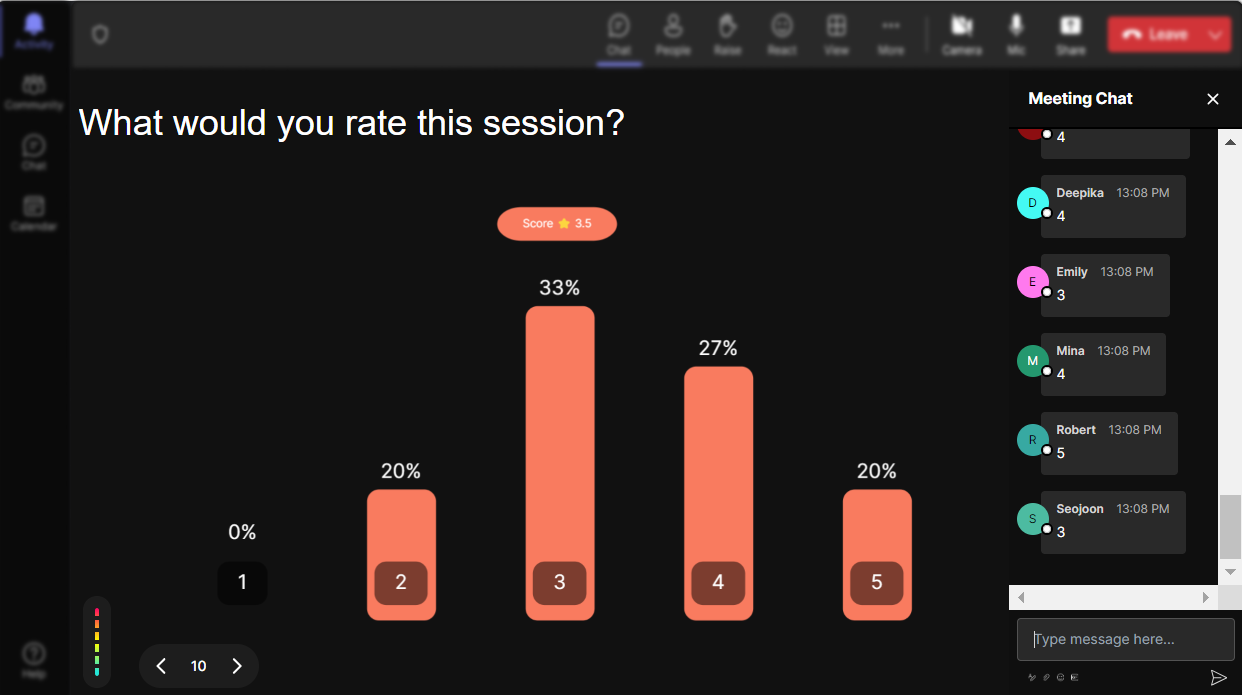
Run regular polls, multiple choice polls, or open ended polls.
Choose from a variety of poll formats including regular, multiple choice, and open-ended polls to cater to different teaching moments and styles in your sessions, ensuring diverse and engaging student participation.
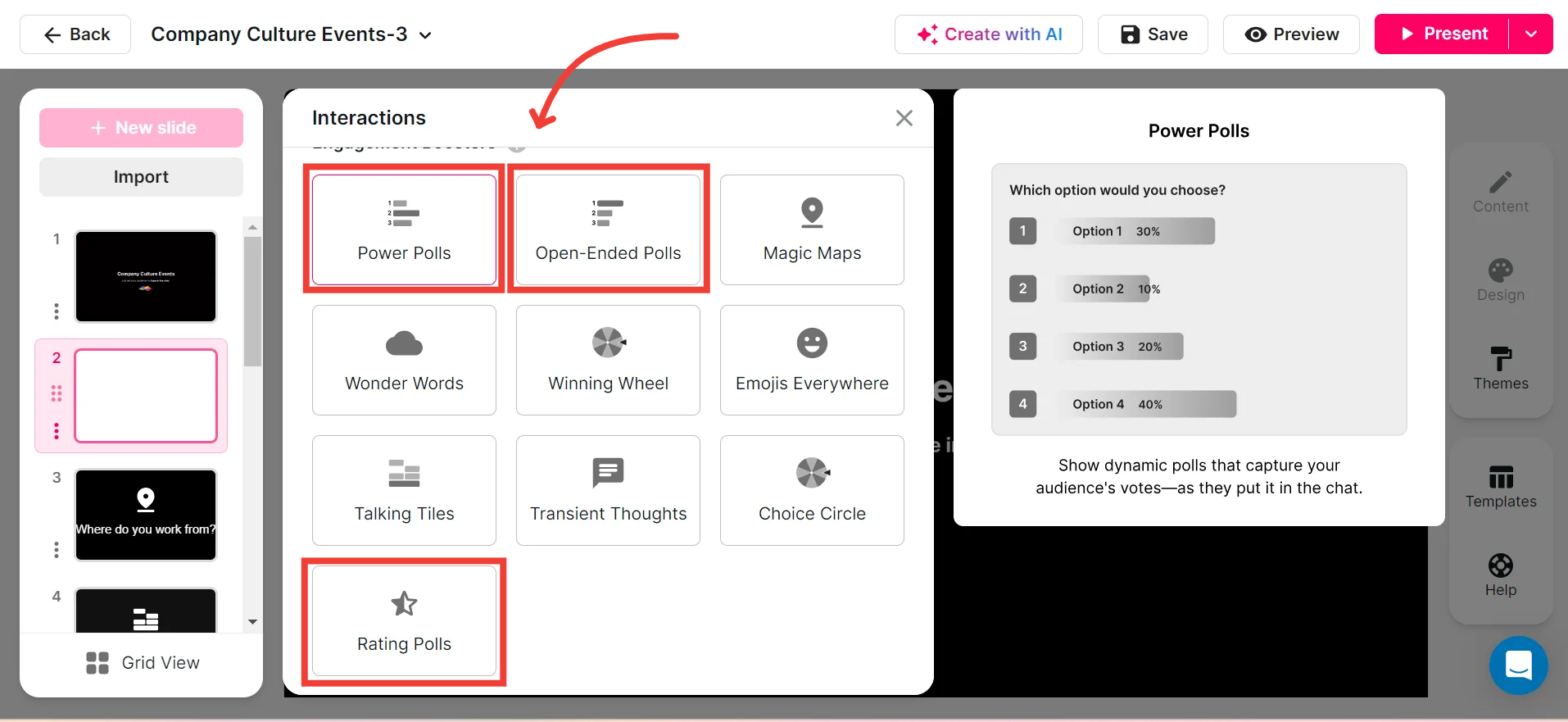
Create unlimited Multiple Choice Polls for your live sessions.
You can craft an endless number of Multiple Choice Polls during your live sessions, allowing you to continuously check for understanding and keep your students actively involved in discussions, critical for subjects like Computer Science.
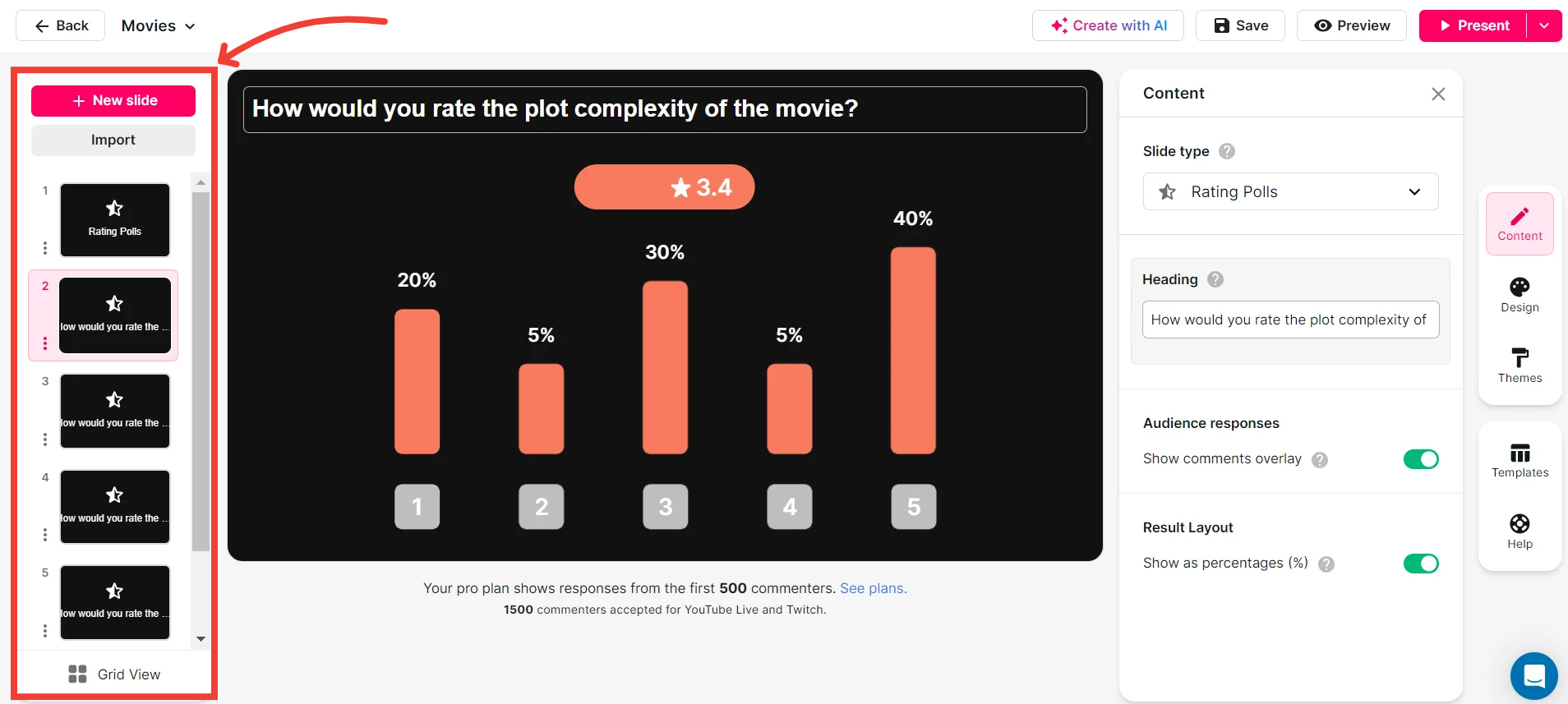
Use StreamAlive's browser-based chat to make voting anonymous.
StreamAlive provides a browser-based chat feature that ensures student responses remain anonymous, encouraging honest feedback and increased participation while maintaining the focus on creating an inclusive learning environment.
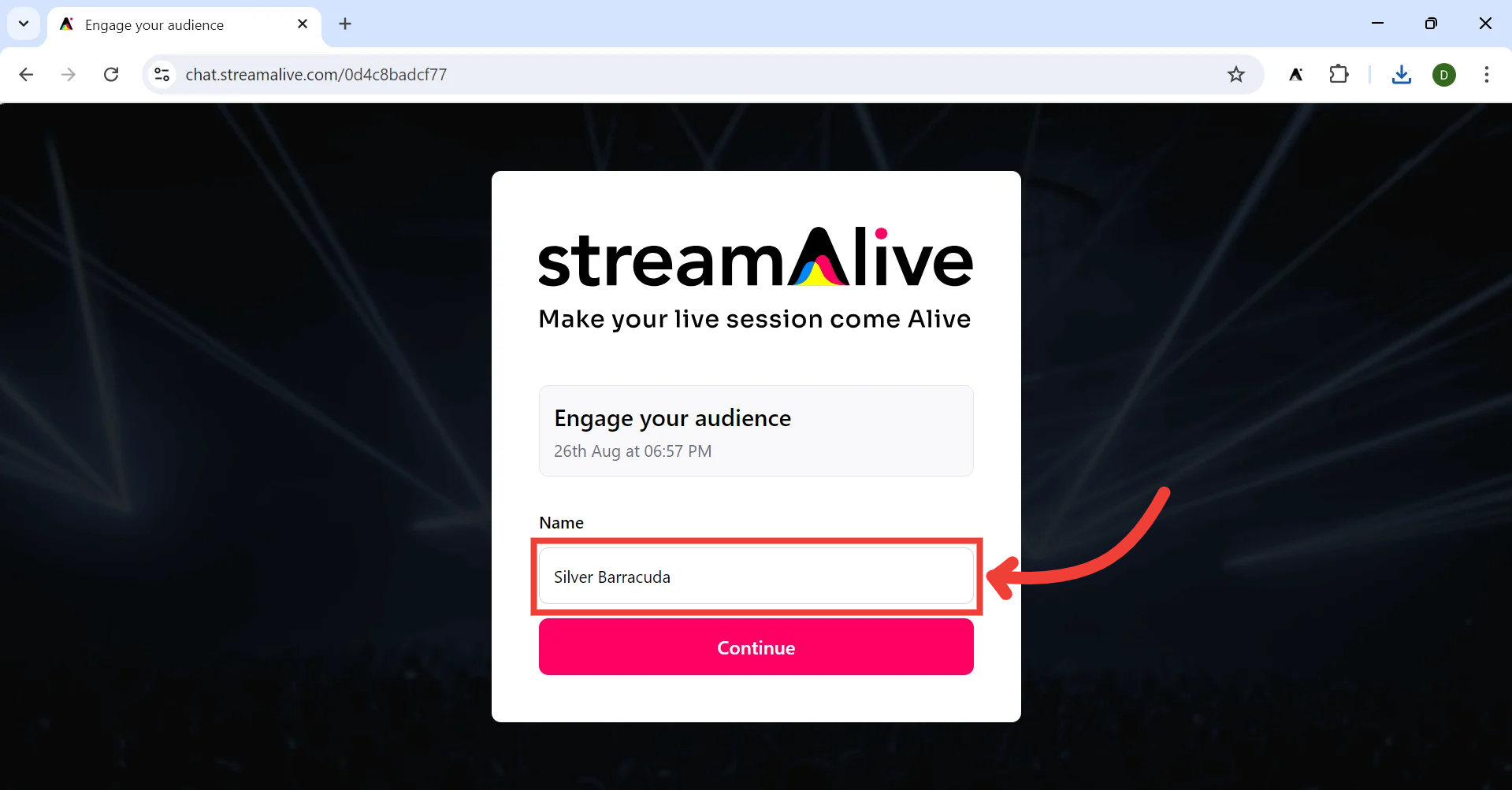
Customize how your Multiple Choice Polls look.
Tailor the appearance of your Multiple Choice Polls to match the theme of your lecture or the aesthetic of your teaching platform, enhancing visual appeal and interaction during sessions, and promoting sustained student interest and participation.
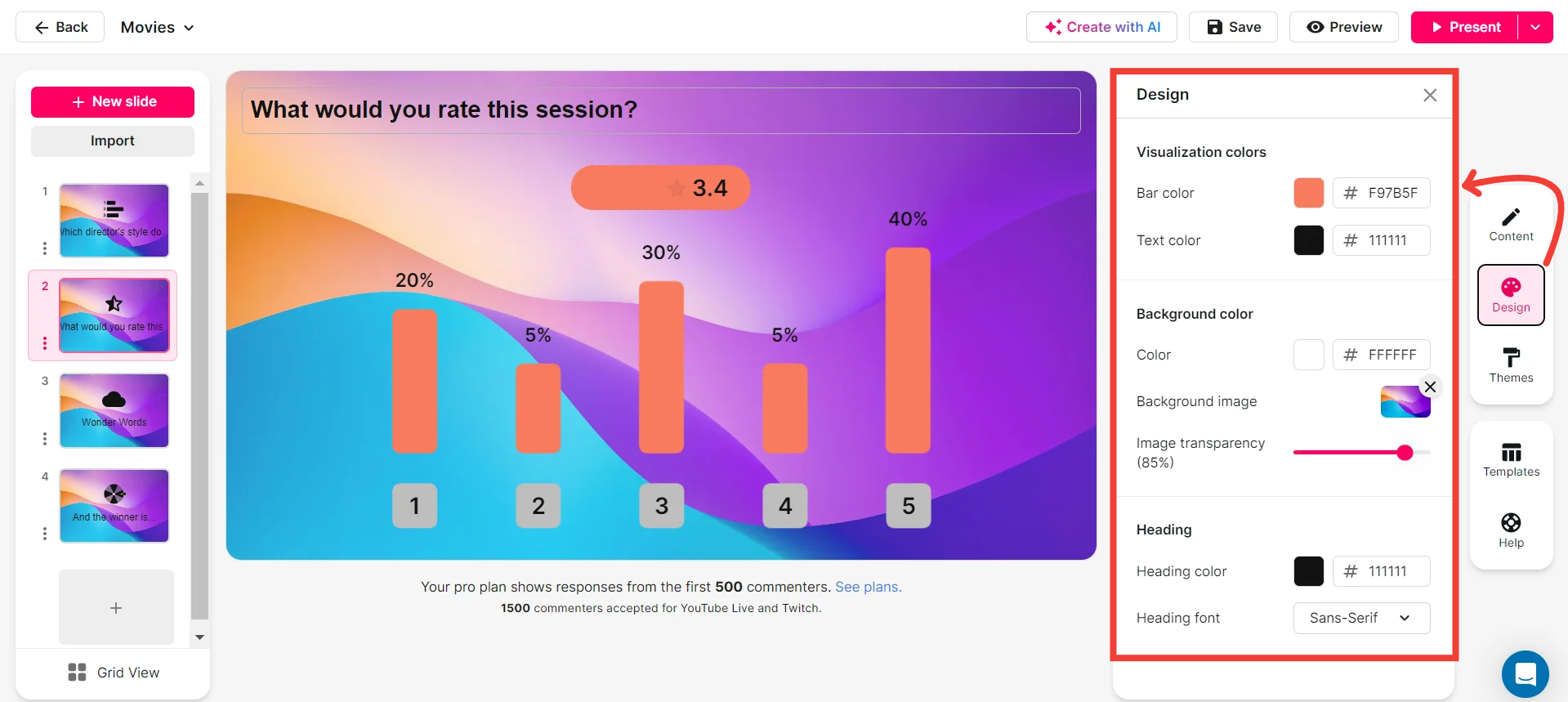
Save Multiple Choice Polls results and see who voted.
Keep a record of poll results and participant data to review post-lecture; this feature helps in tracking student progress and understanding, and in refining future lectures to enhance live audience responsiveness and learning outcomes.

Chat-powered
Multiple Choice Polls
isn't the only thing
you can do with StreamAlive
Bring your audience’s locations to life on a real-time map — as they put it in the chat.
Create unlimited live polls where the audience can vote directly from the chat box.
Spin a wheel of names or words and let the spinner wheel pick a winner.
Add a bit of Vegas to your live sessions and award prizes to active users in the chat.
StreamAlive automatically saves any link shared in the chat to be shared afterwards.
Call-out your audience's chats in cool thought bubbles for everyone to see in.
Unleash a storm of emojis to find out how or what your audience is thinking.
Your audience's thoughts and opinions visualized in a cascading sea of colorful tiles.
Visualize every word (profanity excluded) of your audience's chat comments.
StreamAlive automatically sniffs out audience questions and collates them for the host.
Bring your audience’s locations to life on a real-time map — as they put it in the chat.
Bring your audience’s locations to life on a real-time map — as they put it in the chat.
Bring your audience’s locations to life on a real-time map — as they put it in the chat.
Bring your audience’s locations to life on a real-time map — as they put it in the chat.
Bring your audience’s locations to life on a real-time map — as they put it in the chat.
Bring your audience’s locations to life on a real-time map — as they put it in the chat.
Bring your audience’s locations to life on a real-time map — as they put it in the chat.
Bring your audience’s locations to life on a real-time map — as they put it in the chat.
Bring your audience’s locations to life on a real-time map — as they put it in the chat.
Bring your audience’s locations to life on a real-time map — as they put it in the chat.
Bring your audience’s locations to life on a real-time map — as they put it in the chat.
Bring your audience’s locations to life on a real-time map — as they put it in the chat.
Bring your audience’s locations to life on a real-time map — as they put it in the chat.
Bring your audience’s locations to life on a real-time map — as they put it in the chat.
Bring your audience’s locations to life on a real-time map — as they put it in the chat.
Bring your audience’s locations to life on a real-time map — as they put it in the chat.
Bring your audience’s locations to life on a real-time map — as they put it in the chat.
Bring your audience’s locations to life on a real-time map — as they put it in the chat.
Bring your audience’s locations to life on a real-time map — as they put it in the chat.
Bring your audience’s locations to life on a real-time map — as they put it in the chat.
Bring your audience’s locations to life on a real-time map — as they put it in the chat.
Bring your audience’s locations to life on a real-time map — as they put it in the chat.
Bring your audience’s locations to life on a real-time map — as they put it in the chat.
Bring your audience’s locations to life on a real-time map — as they put it in the chat.
Bring your audience’s locations to life on a real-time map — as they put it in the chat.
Bring your audience’s locations to life on a real-time map — as they put it in the chat.
Bring your audience’s locations to life on a real-time map — as they put it in the chat.
Bring your audience’s locations to life on a real-time map — as they put it in the chat.
Bring your audience’s locations to life on a real-time map — as they put it in the chat.
Bring your audience’s locations to life on a real-time map — as they put it in the chat.
Bring your audience’s locations to life on a real-time map — as they put it in the chat.
Bring your audience’s locations to life on a real-time map — as they put it in the chat.
Bring your audience’s locations to life on a real-time map — as they put it in the chat.
Bring your audience’s locations to life on a real-time map — as they put it in the chat.
Bring your audience’s locations to life on a real-time map — as they put it in the chat.
Bring your audience’s locations to life on a real-time map — as they put it in the chat.
























.png)







.svg)
.svg)
.svg)
.svg)
.svg)